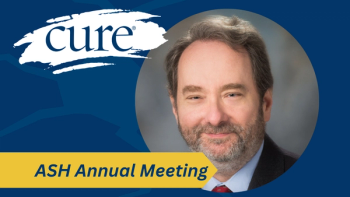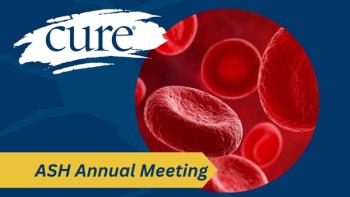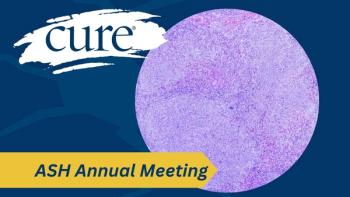
New Approaches Have Emerged that May Better Treat Secondary Breast Cancer Years After an Initial Diagnosis
“Novel approaches to immunotherapy, targeted therapy and combinations with standard chemotherapy are all areas of current research interest,” says an expert at Dana-Farber Cancer Institute Sarcoma Center in Boston. “(Secondary breast cancer) can be very challenging when it recurs, so we need to continue to work toward improving systemic therapies through ongoing international trials and collaboration across the community of patients and physicians. That’s what’s going to help us improve outcomes.”
Jeanne Smith of Ferndale, Michigan, was diagnosed with invasive ductal carcinoma, the most common form of breast cancer, in May 2014 at the age of 44.
The cancer was caught very early, and after a lumpectomy and six weeks of radiation, “I was on my way,” she says.
For the next three years, Smith had follow-up appointments every six months to ensure she remained cancer-free. By February 2017, she was cleared to drop down to yearly follow-ups. But in July 2017, while swimming in her sister’s pool, Smith noticed a small purple bruise on her right breast, the same side where she had cancer.
She figured she had bumped it when she jumped onto a pool float. A month later, however, at her annual gynecology appointment, the bruise was still there, so she pointed it out to her doctor. He said bruises were not uncommon on previously radiated breasts but that if it was still there in two weeks to call him.
“Two weeks later, the bruise seemed to be growing, which was odd. Bruises shouldn’t grow. It was also odd that the bruise was painless,” Smith says.
Her gynecologist referred her back to her breast specialist, but the breast specialist commented that she’d never seen anything like that and referred her back to her radiation oncologist. Smith wasn’t able to see the oncologist right away, so the nurse took a picture of the bruise and sent it to the doctor.
“That night, my radiation oncologist called me and said, ‘I need to get you in here. I think you have angiosarcoma,’” she recalls.
The Benefits and Risks of Radiation
Smith had secondary breast angiosarcoma, also called radiation-induced breast angiosarcoma. This type of cancer develops in people who have previously been treated for breast cancer. Most often, it happens in women who have had radiation to the breast. But it can also arise in women who’ve had long-term lymphedema (swelling) in the breast or arm.
Breast angiosarcoma starts in the blood or lymphatic vessels of the breast, and the first signs can appear on the skin of the breast or the arms. It can grow and sometimes spread quickly to other parts of the body.
Smith didn’t know what angiosarcoma was, and it’s no wonder. It’s extremely rare. Far fewer than 1% — 0.05% to 0.3% — of breast cancer survivors who have breast-conserving surgery followed by radiation later develop secondary breast angiosarcoma, according to study findings published in the journal Clinical Sarcoma Research in 2017.
Smith didn’t recall learning about the risk for secondary cancers before she started radiation, but even if she had, it wouldn’t have changed her care.
“The benefits of radiation far outweigh the risk of ever getting angiosarcoma,” she says.
Angelia Carpenter of New London, Missouri, developed angiosarcoma of the breast five years after completing treatment for breast cancer, which included a lumpectomy, chemotherapy and radiation. Only then did she go back and look at some of the patient information she received prior to starting radiation.
“At the bottom of the page, it says that less than 1% of patients that receive radiation may have some of these other problems,” Carpenter recalls.
When doctors don’t go into great detail about the extremely low risk of angiosarcoma after breast radiation, it’s not necessarily an oversight. They may underemphasize this risk by design. Like any medical decision, the benefits must be weighed against the risks — and in most situations, the reduction in the risk of recurrence or death due to breast cancer by far outweighs the risk of developing or dying of angiosarcoma. However, this points out the need to provide these numbers as best estimates of the patient’s specific situation.
“We can educate as long as we don’t alarm people,” says Dr. David Euhus, a breast surgeon and professor of surgery at Johns Hopkins Medicine in Baltimore. “Angiosarcoma is a terrible thing, but if anyone ever decided not to have radiation because they didn’t want to get angiosarcoma, then we would have done them a huge disservice.”
When women do learn about this risk, they typically hear about it from their radiation oncologist before undergoing treatment.
“At our institution — and I would imagine at other tertiary care centers — patients are informed of the risk of developing a secondary angiosarcoma post-radiation, typically showing up six to 10 years after they’ve had radiation, but we emphasize that the risk is less than 1%,” explains Dr. Yara Abdou, a breast medical oncologist at UNC Lineberger Comprehensive Cancer Center in Chapel Hill, North Carolina.
Potential Risk Factors
Because secondary breast angiosarcoma is so rare, it’s a challenge to study large groups of women who have had this cancer and identify any potential risk factors they may have in common. As a result, there is limited research in this area.
“The typical patient who will get this is someone who’s had breast-conserving therapy, which includes lumpectomy followed by radiation, for their generally early-stage breast cancer. Many years after that’s completed, a small subset of these people will develop secondary angiosarcoma,” advises Dr. Michael Wagner, a medical oncologist who treats sarcomas at Fred Hutchinson Cancer Center in Seattle and assistant professor at the University of Washington School of Medicine.
Besides radiation exposure, chronic lymphedema after breast cancer treatment is also a risk factor. Outside these known risks, there isn’t a consensus on other risk factors.
A study published in the Annals of Surgical Oncology in 2021 of nearly 600 women who had secondary breast angiosarcoma found that the following factors may also put patients at higher risk:
•White race.
•Older age.
•Having had an invasive tumor.
•Lymph node removal (a cause of lymphedema).
•Having had a lumpectomy.
•Having had a tumor in the left breast.
“Identifying the risk factors for this late complication is one of the main challenges,” notes Dr. Suzanne George, a medical oncologist and director of clinical research at the Dana-Farber Cancer Institute Sarcoma Center and associate professor of medicine at Harvard Medical School in Boston. “What puts someone at risk, and is there anything we can do to modify those risk factors early on? That’s a super important question.”
Diagnosing Secondary Cancers
Although risk for this secondary cancer is extremely low, it’s important to know the signs to catch it early, especially because angiosarcoma of the breast can spread quickly.
“As with many cancers, management when it’s (diagnosed) early likely improves longer-term outcomes,” George says.
The most common signs of secondary breast angiosarcoma are:
•Swelling in the breast or arm.
•A painful lump in the breast.
•A discoloration on the skin of the breast or arm that looks like a bruise or rash.
“Women can get bruises on their breasts,” Euhus mentions. “That’s far more common than angiosarcoma. But a bruise should start to fade in a couple of days. A bruise that’s not fading needs a skin punch biopsy — a two-minute procedure in the office.”
Women can also develop other types of radiation-related discolorations on their breasts that aren’t cancerous.
“They can get little vascular lesions, but they’re not growing, which can be confused with angiosarcoma,” Wagner notes. “Or an angiosarcoma can be confused with just an abnormal growth of blood vessels. That’s why it’s very important that a pathologist trained and experienced in sarcoma review the biopsy sample.”
A skin biopsy is the key tool in diagnosis of secondary breast angiosarcoma and is ideally done in the context of an evaluation by a dermatologist. Diagnosis might also involve a mammogram, breast MRI, PET scan or ultrasound.
Determining What’s an Effective Treatment
Another challenge of extremely rare cancers is identifying the most effective treatment. There’s no standard, go-to treatment for secondary breast angiosarcoma, so doctor recommendations may vary by hospital.
“Since it’s a very rare tumor, there’s a limited number of published studies, so treatment guidelines are based on expert opinion rather than published data,” Abdou mentions. “We usually extrapolate data or experience from other soft tissue sarcomas.”
Surgery, however, is the key component of treatment. Surgical options include complete mastectomy of the radiated breast or removal of only the affected, discolored area, much like removal of a cancerous mole.
“We think of it as a malignancy of the skin,” George advises. “It can extend deeper into the breast tissue itself, but we think of it as originating in the skin.”
Research has begun to show that the more radical surgery option gets far better results. A 2017 study in Annals of Surgery looked at the percentage of women who had not died from breast angiosarcoma (that is, disease-specific survival) within five years of either radical or conservative surgery. The five-year disease-specific survival rate among women who’d had the most aggressive surgery was 86% compared with 46% of women who’d had the more conservative surgery.
Surgery is the mainstay of treatment for secondary breast angiosarcoma. Whether doctors recommend additional adjuvant chemotherapy or radiation treatments varies from one health care facility to the next. When they do recommend it, doctors tend to use a taxane-based chemotherapy regimen. But it may not be beneficial for everyone.
“The vast majority (of patients) are not terribly chemotherapy sensitive, but there is a small subset of patients who are exquisitely sensitive to Taxol (paclitaxel), the common chemotherapy drug we use in the breasts,” Euhus notes.
In some cases, though it may seem counterintuitive, people get radiation for this type of cancer, too.
“It’s the tissue damage and inflammation (from previous radiation) that’s causing the breast angiosarcoma in the first place, but the radiation therapy post surgery is cleaning up whatever cancer cells may be left in the breast,” Abdou says.
The Importance of Diligence
Smith had surgery to remove the radiated breast and chemotherapy to treat the breast angiosarcoma. She has been cancer-free since she completed treatment in 2018.
Carpenter had surgery in 2016, and nine months later, that familiar purple bruise reappeared near her mastectomy scar.
Recurrence rates for this type of cancer are high — around 50% according to some estimates. Carpenter, now 62, has learned to live with that risk.
“Some tell me my risk for another recurrence goes down as I get older, but others say it’s not ‘if’ but ‘when,’” she notes. “I’ve learned I also have to live my life. I’m just diligent about it. If anything comes up around my scar, we watch it.”
After her recurrence, Carpenter had another surgery, which she describes as having left a hole in her chest, to remove as much tissue as possible from the radiated side of her chest and additional tissue from under her arm. After surgery, she underwent chemotherapy.
“When we get a localized recurrence, if it’s possible to do another surgery, we would treat it in the same way with surgery and chemotherapy,” Wagner advises. “If a repeat surgery isn’t possible, we would use systemic medicines, such as chemotherapy or targeted drugs.”
Furthering the Secondary Breast Cancer Space
Recurrences can be harder to get under control than first occurrences. Research is underway to identify other medications that may be more effective than the current options. The Alliance for Clinical Trials in Oncology has an ongoing trial examining the efficacy of immunotherapy in the treatment of angiosarcomas.
Trial participants who have never been treated with taxane-based chemotherapy will receive Taxol with or without Opdivo (nivolumab). Those who have already had taxane will receive Opdivo and Cabometyx (cabozantinib).
Opdivo, already in use in numerous metastatic cancers, is what’s known as a checkpoint inhibitor, the most common class of immunotherapy used in cancer. It blocks proteins on the surface of cancer cells that protect them from an immune system attack. Cabometyx, also used in the treatment of several other metastatic cancers, is what’s known as a kinase inhibitor and targets certain gene mutations in cancer cells that help the cancer grow and spread.
“Novel approaches to immunotherapy, targeted therapy and combinations with standard chemotherapy are all areas of current research interest,” George says. “This disease can be very challenging when it recurs, so we need to continue to work toward improving systemic therapies through ongoing international trials and collaboration across the community of patients and physicians. That’s what’s going to help us improve outcomes.”
For more news on cancer updates, research and education, don’t forget to
To learn more about Angelia Carpenter's experience with secondary angiosarcoma after undergoing breast cancer treatment and what it was like to be left with a hole in her chest,





